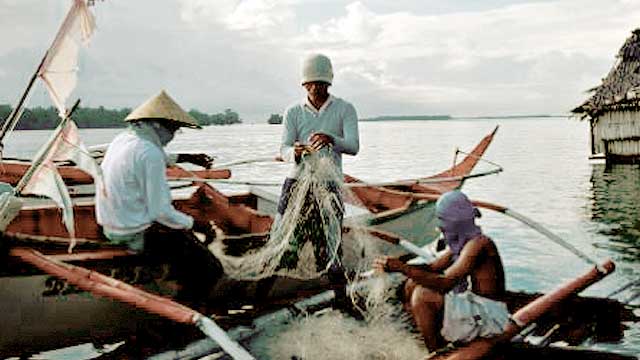SUMMARY
This is AI generated summarization, which may have errors. For context, always refer to the full article.
 An imbalance in a country’s development points to its leaders who forget their roots (no pun intended).
An imbalance in a country’s development points to its leaders who forget their roots (no pun intended).
Once called the “rice czar of Asia,” for example, the Philippines is now a heavy importer of rice. This is ironic considering that our economy is based on agriculture.
Upticks in our gross domestic product (GDP) have been attributed to factors like overseas Filipino worker (OFW) remittances, business process outsourcing (BPO) operations, and the semiconductor–electronic industry–sectors that are not stable and are susceptible to collapse with existing global uncertainties.
Inclusive growth from an agri-industry base economy is more fundamental to us, primarily because we are an agricultural country. In the long run, this will be more beneficial on a wide scale, ensuring stable livelihood for small farmers and fisherfolk – those who produce our food.
The people who grow our food are directly affected by faults in the policies made in the name of trade liberalization in Philippine agriculture. The lack in clear targets, for one, cost them important government support. Proper government support could have saved many small farmers’ jobs, prevented productivity backlogs, and raised agriculture’s contributions to the GDP. The result? A declined GDP and the country’s vulnerability in food security.
READ: Zero hunger challenge: Is it attainable?
How many candidates seeking to be elected into office on May 13 have trade liberalization and fair labor practices on their agenda? How many see the micro (as opposed to the macro) picture—that inclusive growth and food security is also about the small food producer and what each contributes to the country?
It will take some time, but the pursuit for inclusive growth and food security can be achieved in a shorter time than imagined. We have the resources to revive and strengthen our agro-industrial based economy, and — with the right people in office — the groundwork for granting the common Filipino basic protection against unfair trade and labor practices and competition.

Different government agencies can do their share. Here’s how:
1. Curb smuggling
Congress should amend existing laws imposing the stiffest penalty against smuggling as a heinous crime of economic sabotage. This crime has been killing the local industries, and depriving poor Filipinos of the benefits of anti-poverty government programs, due to supposedly stolen national revenues from tax collections.
The Bureau of Customs (BOC) must provide copies of Inward Foreign Manifests to the Department of Trade and Industry (DTI) and the Department of Agriculture (DA) to proactively quell any contraband being shipped into the Philippine soil. It should also stop the influx of substandard and environmentally-hazardous products in our domestic market by strictly enforcing the Import Commodity Clearance (ICC) requirement, supported with clearance from respective government agencies.
2. Enforce international fair trade safety nets
The DTI should find ways to build up their intelligence capability on international market surveillance. This is to strengthen enforcement of international fair trade safety nets (anti-dumping, import surge, unfair subsidies and countervailing).
3. Institute an agro-industrial roadmap. For industry priority development, government must identify agri-based products where we are truly competitive at–those with high market demand, high value chain linkages, high job creation, and those that promote food security.
This holistic plan must include the construction of strategically-located infrastructure vital for mobility and product storage (farm to market roads, irrigation, post harvest facilities, roro ports, etc.). Priority development should be given to the lagging regions of Mindanao, Bicol, Eastern Visayas, and Cagayan Valley.
4. Train DTI, DA, MSMEs, and farmers
This involves setting up structural reforms (both horizontal and vertical) and establishing a strong coordinative mechanism between DTI and DA. In turn, they must create oversight councils per sector and/or product to monitor the development of respective industries.
Capability building of the MSMEs, Small Farmers and Informal Sector, meanwhile, should be given in terms of accessing low interest capital/credit, technology transfer, exploring new markets, and availing of training and fiscal incentives.
5. Ensure gender equality
Women should be provided equal access to equal work and pay, as well as more access to basic services and social protection.
6. Promote innovative market-based mechanisms
This is better done through complementation than competition. In doing so, a customized Big Brother-Small Brother arrangement (and the like) can be created to support small producers.
7. Adopt further economies of scale production
Bigger markets can be explored with the formation of cooperative-based nucleus farms, and government-owned agro-industrial estates (those that do not deplete basic resources and compete with the market of small farmers and producers).
8. Buy Filipino
We can strengthen this movement by strengthening existing laws on government preferential purchases for locally-made products.
9. Better research and development
Our competencies can focus on product diversification and innovation with high consumer value, and enhanced crop propagation in both traditional (grafting/marcoting/etc.) and non-traditional methods (tissue culture, cheap hybrid seeds, etc.), making the latter affordable to small farmers.
We must increase the development of high-value and high-yielding crop varieties that are more resistant to disease and resilient to climate change. Furthermore, we must revive our capability for the invention/innovation of locally-made and commercially-grade farm machinery, processing technologies and enhanced green farm inputs, and superior product packaging.
We could make the Philippines the “green food basket of Asia” by intensifying the production of organic crops and green foods both for the domestic and export market. This high-value added thrust should be supported with eco-labeling, development of green model farms, and promotion of trainings on green farm techniques and technologies.
Steve Tavera is part of Free Trade Alliance and has worked on different projects in the public sector particularly with various national agencies like DOE, DTI, PEZA and NEDA.
This piece is part of Oxfam’s GROW campaign which calls for better ways to grow, share and live together, a campaign for the billions of us who eat food and over a billion of men and women who grow it. Oxfam is an international confederation of 17 organizations networked together in more than 94 countries, as part of a global movement for change, to build a future free from the injustice of poverty. In the Philippines, Oxfam works with poor people and support women to sustain their livelihoods, and reduce their risks to natural and human-made disasters.
Add a comment
How does this make you feel?
There are no comments yet. Add your comment to start the conversation.